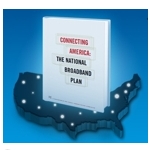 The Federal Communications Commission has been relentless in its questioning of whether broadband speeds delivered by service providers match advertised speeds—and the wording of a new report about Internet subscribership released late last week was no exception.
The Federal Communications Commission has been relentless in its questioning of whether broadband speeds delivered by service providers match advertised speeds—and the wording of a new report about Internet subscribership released late last week was no exception.
The report, titled “Internet Access Services: Status as of June 2009,” was based on mid-year 2009 data about Internet subscribership that service providers are required to report. A key finding, the FCC said, was that only 44% of residential broadband subscribers had chosen a service tier with an “advertised” data rate that met or exceeded the data rate that “most closely approximates” the universal availability target set in the National Broadband Plan. That target is “actual speeds” of 4 Mbps downstream and 1 Mbps upstream.
“Of course actual speeds may lag advertised,” wrote FCC Infrastructure Manager Steven Rosenberg in a blog post about the new Internet Access Services report. “Hence our effort to gather hard data on the differences between actual and advertised speeds.”
Even though a recent survey commissioned by the FCC found that 91% of broadband subscribers were “very” or “somewhat” satisfied with the speed of their connections, the FCC has made considerable efforts to substantiate its assertion that advertised broadband speeds exceed those actually deployed. The commission’s efforts have included hiring a U.K.-based research firm to measure actual versus advertised broadband speeds across the U.S. and investigating the same issue in a report based on information gathered by commscore from 200,000 machines representing a cross-section of the U.S. Internet population.
According to that data, gathered in 2009, the average (mean and median) advertised download speed for U.S. residential consumers is 7-8 Mb/s. But the mean actual speed consumers received in 2009 was approximately 4 Mb/s and the median actual speed was approximately 3 Mb/s, the FCC said.
The reason the FCC is so fixated on this topic is not difficult to fathom. The commission wants to justify its choice of the 4Mbps/ 1 Mbps broadband speed target—a target rural carriers say is too low. In a recent speech, for example, FCC Chairman Julius Genachowski argued that, “Four megabits actual speed—which translates to a typical advertised speed of 8 megabits per second—would be a 20-fold increase over the FCC’s old 200 kilobit definition for broadband.”
In his blog, Rosenberg also attempted to further another item on the National Broadband Plan agenda—to make an additional 500 MHz of wireless spectrum available for broadband. “Note the incredible growth of wireless data plans: subscriptions to mobile data services for full Internet access increased by 40% in just six months,” he wrote. “That increase underscores how critical it is to free-up more spectrum to support these popular, innovation-driving services, as called for in the National Broadband Plan.”
The new Internet Access Services report also noted substantial growth in fiber-to-the-premises (FTTP) connections, which increased 23% during the first half of 2009. The data showed that of 94 million residential broadband connections as of mid-2009, 42% were cable modems, 29% used DSL, 24% were mobile wireless with full Internet data plans, and 4% used FTTP. Other technologies represented just 1% of the total.

